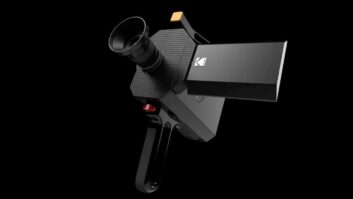NEW YORK — Overall, the U.S. camera industry contracted in 2014 with the continued decline in point-and- shoot cameras and DSLRs, but industry analysts pointed out that the period was not without its positive indicators.
Market research firm IDC and The NPD Group both charted renewed growth in the mysterious “mirrorless” (a.k.a. compact system camera, or CSC) market as consumers fell in love with the easier to carry form factor and comparable-quality images to DSLRs.
IDC said the growth trend for CSCs continued through the end of 2014.
“Compact system cameras have reached a positive turning point; U.S. ILC users are looking at the smaller-footprint CSC cameras offer as increasingly valuable,” noted Chris Chute, IDC digital imaging practices research VP. “When I talk to enthusiast photographers, they are excited to use smaller, lighter cameras that have the same image quality as larger DSLR models.”
Ben Arnold, NPD industry analysis executive director, called the turnaround in mirrorless cameras “probably the biggest story of 2014.”
“Mirrorless underperformed in 2013, and I think many, myself included, had questions about the appeal of the new technology. While Q1 was weak, year-to-date through October dollar sales of mirrorless detachable lens cameras are up 10 percent compared to last year.”
Mirrorless now accounts for roughly 14 percent of interchangeable-lens camera (ILC) sales, up from 10 percent two years ago, according to NPD estimates.
“Going forward, I’m looking for the top brands in mirrorless, which have less of a presence in traditional DSLR, to continue to challenge that segment of the market. [This] is talking about the advantages of mirrorless and really trying to siphon off the traditional 25 to 44 DSLR life-stage buyer and bring them into the mirrorless market.”
The U.S. DSLR business (excluding mirrorless) continues to slide in unit sales, with The NPD Group registering a 19 percent decline is unit sales at retail during the year.
IDC’s Chute said the decline in DSLRs as well as compact point-and-shoot cameras in 2014 was “squarely due to consumers moving away from buying low-end ILCs and compact cameras. Vendors have responded by moving up market, offering compact and ILCs aimed at enthusiasts and professional photographers.”
IDC forecast that those trends will continue into 2015 as the market looks for a “bottoming out,” when market demand finally flattens.
Chute added that IDC predicts this will happen after 2015 as the market declines to a total annual size last seen in 2006 for ILCs, when enthusiasts and prosumers, not consumers, were driving the category.
As for camera retailing, both analysts said the trend toward better-featured products favors specialty photo dealers.
“I’d expect specialty retailers to be much more important in 2015 with their focus on the upper ends of the camera market,” said Arnold. “I’m sure this is not lost on larger retailers, so perhaps we can expect a similar focus from general retailers and the larger electronics retailers as a way to offset declines in the mid and budget tiers of the still camera market.”
Chute recommended photo-specialty retailers “continue to focus on the ILC space, nurturing that enthusiast user with in-store events and learning classes. These retailers should also focus on unlocking photo printing opportunities from smartphones. IDC has uncovered an older demographic who loves using smartphones to capture pictures of family, but becomes stymied when looking to print those images. This is a clear opportunity the photo industry should work to support.”
Another vibrant area of the imaging market in 2014 was so-called action video cameras, or point-of-view (POV) cameras, like those started by GoPro.
“The 2014 [camcorder] market was squarely driven by the POV space,” said Chute. “GoPro continued to lead the category with strong point of sale presence in major CE stores like Best Buy.”
Chute observed broad appeal for the POV segment, as more average consumers become intrigued by capturing first person video.
“Outdoor sports enthusiasts are still embracing the segment, as is the media and entertainment industry, who often look to POV cameras as a means to expand creativity.
IDC forecasts continued double-digit growth for the POV space as consumer demand grows for this unique product. In comparison, the traditional camcorder segment saw further deterioration as consumer demand ebbed, according to Chute.
“On the higher end, traditional models saw market support as a growing segment of enthusiast videographers drove the higher end of the space, blurring the line between consumer and commercial video content capture,” Chute said.
NPD’s Arnold saw the continued strong growth of the action video camera segment “surprising, simply because GoPro solidified their leadership position. GoPro accounts for over 60 percent of total camcorder sales and in upwards of 80 percent of the action camera market.”
“Sony, JVC, iON are all viable competitors, but our numbers show there isn’t a ton of space in the market for competitors,” Arnold continued. “In my mind, the market can be disrupted by a competitor who can come to market at a lower price, or with a different suite of accessories (perhaps focusing less on action sports and more on some other active lifestyle).”
Arnold added that the emergence in popularity of drones, “ups the stakes and really begins the conversation on drones as cameras that are just attached to helicopters. So with that in mind, I can see 2015 being more about the accessories or the conveyance (vehicles that are housing the camera) in the action cam market – how far can these accessories and add-ons to the camera push the envelope and demonstrate what one can do with a camera?”
Another positive indicator for growth in at the higher end of both the camera and camcorder segments is the proliferation of models with 4K Ultra HD recording capability.
“Many high-end smartphones include a 4K capture mode,” Chute said. “IDC expects 4K to be a sea change enabler for both production video capture and distribution, as well as the CE space. We expect vendors like Sony will market 4K synergy between cameras and TVs.”













